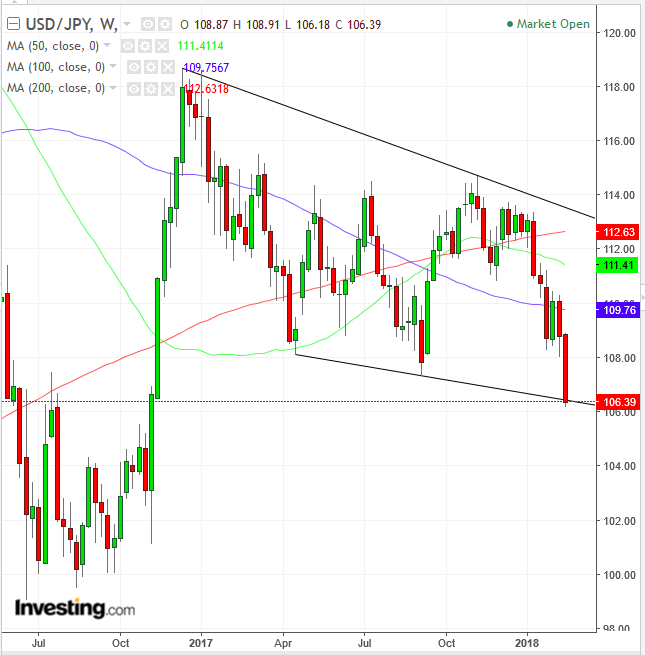Japan’s Finance Minister Taro Aso gave yen bulls the green light to increase positions after saying that the yen’s strength is not abrupt enough to intervene.
The fact that the yen is at a 15-month high despite a staggering interest rate differential in favor of the dollar is a loud bearish roar for the dollar.
See our Opening Bell for an in-depth analysis.

The price is down 2.35 percent for the week, and we still have two trading days left. Today’s decline pushed the price below the bottom of a falling channel. A falling channel is a bearish pattern by definition, demonstrating the angle in which supply overcomes demand, as well as the fact that both buyers and sellers agree that prices should continue to decline, as each is willing to buy and sell at ever lower prices.
When the bottom of a falling channel fails to provide a support, it demonstrates how supply is overrunning whatever demand has been since April, which has managed to bounce prices back upwards of 5 percent to the channel top.
A downside breakout would signal a more abrupt decline (and with already such negative differentials, it’s difficult to imagine what meaningful intervention might scare yen bulls away) with the channel bottom presumed to act as a resistance, as all market participants experienced – positively or negatively – the effect of the support break on their accounts’ bottom line.
The 50-week MA (green) executed a Dead Cross, when crossing below the 200-week MA (red), after the price fell below the 100-week MA (blue). The last time the 50-week MA crossed below the 200-week MA forecasted an almost 9 percent decline, which started the falling channel.
Trading Strategies
Conservative traders would wait either for an upward correction to the channel top or for an obvious downside breakout of the channel, employing a 3 percent filter to 104.24 to weed out bear-traps.
Moderate traders would wait for an upward correction to the channel top or for a 2 percent filter to 103.25.
Aggressive traders may enter a contrarian long trade, counting on the potential bounce. A high-risk trade, going against the prevailing trend which is a very close stop-loss below 106.00, affords an exceptionally favorable risk-reward ratio should a bounce take place. Additionally, traders may enter a short after a 1 percent filter and below the 105.00 round, psychological number, expected to act as a resistance.
